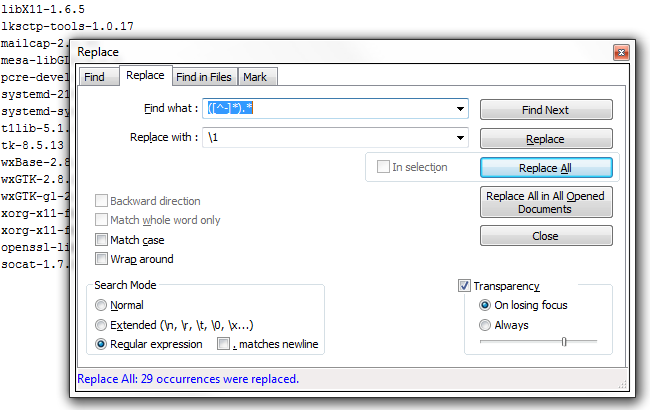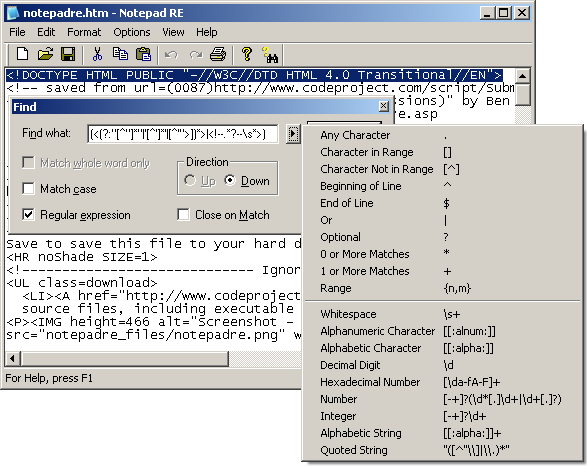

To be able to search for and replace a carriage return in Notepad++, you have to select Extended search mode. Enable search and replace support for carriage return character

On the other hand, Unix-based systems simply uses LF to indicate a new line. TL DR : On Windows, the standard escape code for a new line is CRLF.
LF, short for Line Feed moves the cursor down to the next line without returning to the beginning of the line.Ī stand-alone CR is equivalent to pressing Enter followed by Return key.Ī CR immediately followed by a LF (CRLF, \r\n, or 0x0D0A) moves the cursor down to the next line and then to the beginning of the line. CR, short for Carriage Return tells the viewer to moves the cursor to the beginning of the line without advancing to the next line. In addition, you’ll find good documentation, about the Boost C++ Regex library, v1.55.0 ( similar to the PERL Regular Common Expressions, v5.8 ), used by Notepad++, since its 6.3 Replace carriage return character What is a carriage return character used forĬR and LF are control characters or bytecode that can be used to mark a line break in a text file. Note that, if you use Unix files, change the replacement regex to "\n"įor noob people, about regular expressions concept and syntax, begin with that article, in N++ Wiki : In replacement, we rewrite the two quotation marks, separated with \r\n, which represents a line-break ( Carriage Return + Line Feed ) Then, the part "." matches two quotation marks, separated by any standard character , as matching a single standard character ( different from End of line ones ! ) Voilà ! You should get the following text : "value 1"įirst the modifier (?-s) forces the regex engine to interpret the dot. 
Select the Regular expression search modeĬlick, once, on the Replace All button ( or several times on the Replace button ! )

Type in the regex "\r\n", in the Replace with: zone Type in the regex (?-s)".", in the Find what: zone Anyway, my regex S/R will work, with any standard character, between quotes ! I supposed that there is, only, one space character between the two quotation marks. So given the text, below : "value 1" "value 2" "value 3" "value 4" Hello, easy with regular expression search mode -)








 0 kommentar(er)
0 kommentar(er)
